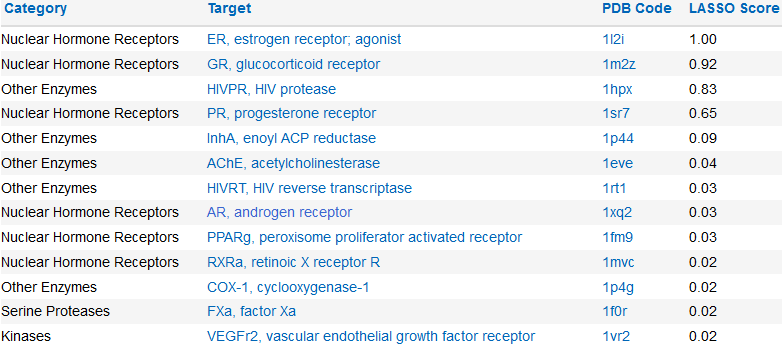sekio
Bluelight Crew
So like most good chemists I'm always thinking about similarities. I remembered the old legend of, people on PCP are superhuman and able to lift cars, they get crazy aggressive, etc, and the like. I thought about its weird possible neuroregenerative processes. I also noted the fact that both arylcyclohexylamines and steroids are bulky, multicyclic compounds with at least one aromatic center and some little polar bits as decorations.
The first spot I go is to Chemspider, cause it has this LASSO thing, which predicts protein affinities. Here's what comes up.
Phencyclidine

PCE

3-HO-PCP

3-MeO-PCP

4-MeO-PCP

4'-OH-PCP

Diphenidine

(s)-Ketamine

So... this is interesting. I know that stuff like tamoxifen and diethylstilbestrol kind of remind me of diphenidine.


Could this explain some of the ... strange effects of PCP and its analogs? Is this a red herring? Does Ashy Larry have bitch tits from smoking sherm? Does getting whacked on methoxy-diphenidine cure breast cancer?
The first spot I go is to Chemspider, cause it has this LASSO thing, which predicts protein affinities. Here's what comes up.
Phencyclidine
NSFW:

PCE
NSFW:

3-HO-PCP
NSFW:

3-MeO-PCP
NSFW:

4-MeO-PCP
NSFW:

4'-OH-PCP
NSFW:

Diphenidine
NSFW:

(s)-Ketamine
NSFW:

So... this is interesting. I know that stuff like tamoxifen and diethylstilbestrol kind of remind me of diphenidine.


Could this explain some of the ... strange effects of PCP and its analogs? Is this a red herring? Does Ashy Larry have bitch tits from smoking sherm? Does getting whacked on methoxy-diphenidine cure breast cancer?
Last edited:




